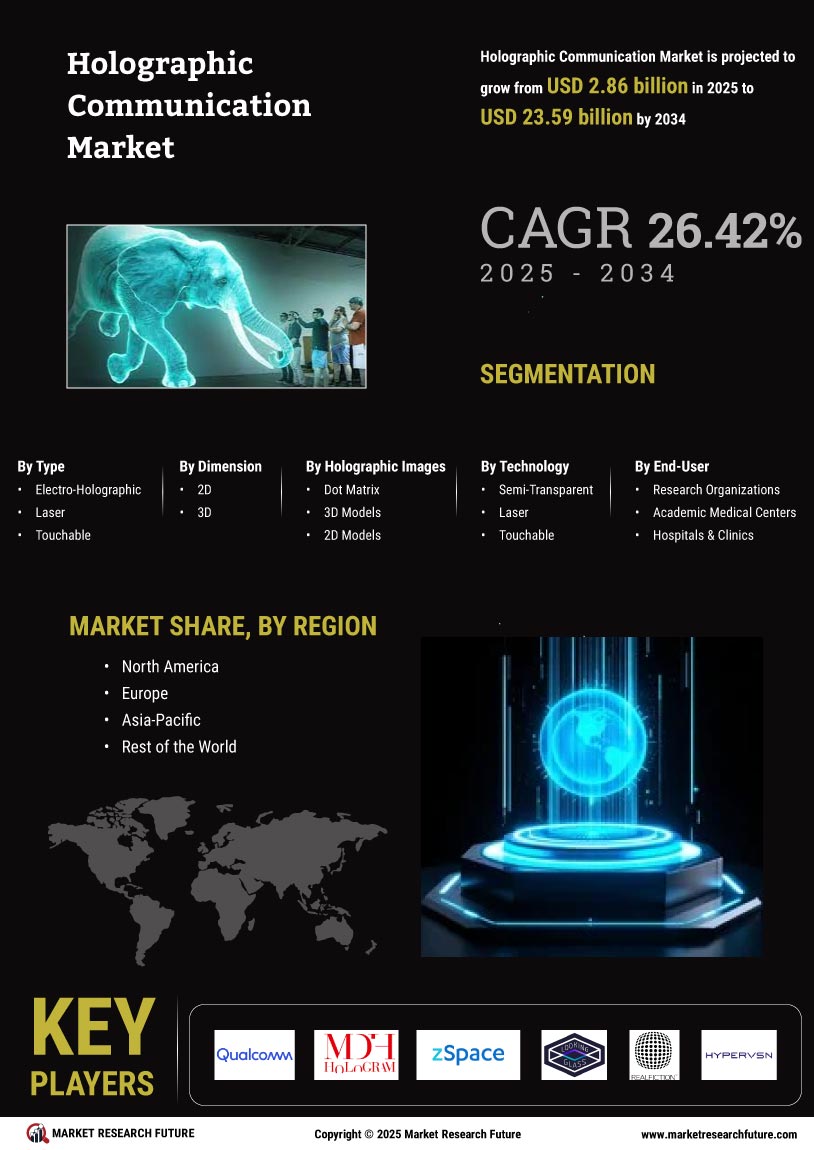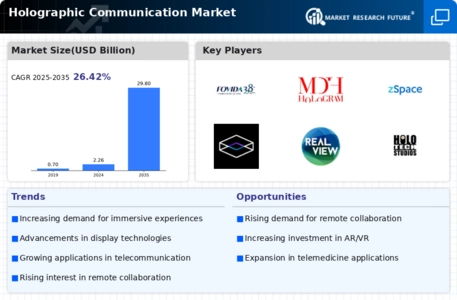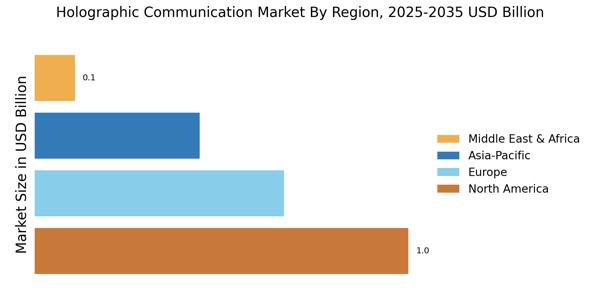Leading market players are investing heavily in research and development in order to expand their product lines, which will help the Holographic Communication Market, grow even more. Market participants are also undertaking a variety of strategic activities to expand their global footprint, with important market developments including new product launches, contractual agreements, mergers and acquisitions, higher investments, and collaboration with other organizations. To expand and survive in a more competitive and rising market climate, Holographic Communication industry must offer cost-effective items.
Manufacturing locally to minimize operational costs is one of the key business tactics used by manufacturers in the global Holographic Communication industry to benefit clients and increase the market sector. In recent years, the Holographic Communication industry has offered some of the most significant advantages to medicine.
Major players in the Holographic Communication Market, including FoVI 3D, Qualcomm Technologies Inc., MDH Hologram, zSpace Inc., Looking Glass Factory Inc., RealView Imaging Ltd., HoloTech, REALFICTION., Vision Engineering Ltd, HYPERVSN., Jasper Display Corporation, Nanolive SA, Phase Holographic Imaging PHI AB., Ovizio., LEIA INC., 4-Deep, Geola Digital, Eon Reality, Mach7t.com, and Lyncee Tec. and others, are attempting to increase market demand by investing in research and development operations.
Qualcomm Inc. creates and develops wireless telecommunications equipment and services. System software and integrated circuits for mobile phones and other wireless products are sold by the company. Its product portfolio consists of integrated circuits for radio frequency transceivers, cellular modems, consumer wireless devices, power management, and wireless connection. The company's goods are used in gateway equipment, consumer electronics, desktop computers, mobile devices, laptops, tablets, cell phones, cameras, servers, wireless devices, network infrastructure equipment, routers, access points, wearable devices, voice and music devices, and Internet of Things (IoT) devices.
Among the markets the company operates in are Brazil, China, Germany, Singapore, India, Japan, Taiwan, South Korea, and the US. Qualcomm's US corporate headquarters are in San Diego, California.
EON Reality, a global software development company, provides augmented reality and virtual reality (AR/VR) solutions that turn conventional training methods in business and academia into experiential training in order to increase the effectiveness of information transmission. A variety of significant industries, such as manufacturing, energy, medical & health, aerospace & transportation, defense & security, etc., can benefit from the creation of AR/VR-based training modules using the Eon-XR Platform by improving knowledge retention, decision-making, and learning pace.


















Leave a Comment